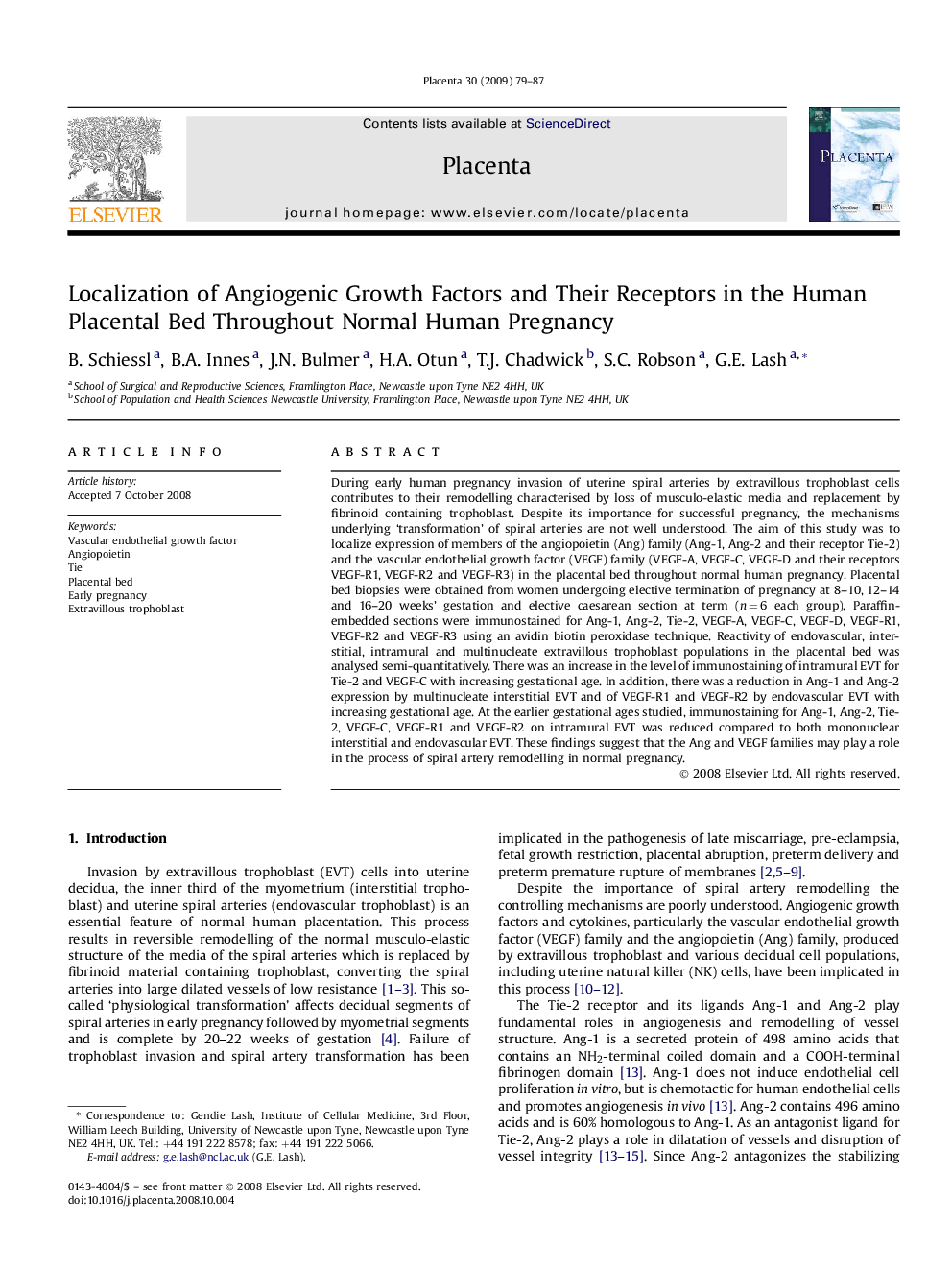| Article ID | Journal | Published Year | Pages | File Type |
|---|---|---|---|---|
| 2789951 | Placenta | 2009 | 9 Pages |
During early human pregnancy invasion of uterine spiral arteries by extravillous trophoblast cells contributes to their remodelling characterised by loss of musculo-elastic media and replacement by fibrinoid containing trophoblast. Despite its importance for successful pregnancy, the mechanisms underlying ‘transformation’ of spiral arteries are not well understood. The aim of this study was to localize expression of members of the angiopoietin (Ang) family (Ang-1, Ang-2 and their receptor Tie-2) and the vascular endothelial growth factor (VEGF) family (VEGF-A, VEGF-C, VEGF-D and their receptors VEGF-R1, VEGF-R2 and VEGF-R3) in the placental bed throughout normal human pregnancy. Placental bed biopsies were obtained from women undergoing elective termination of pregnancy at 8–10, 12–14 and 16–20 weeks' gestation and elective caesarean section at term (n = 6 each group). Paraffin-embedded sections were immunostained for Ang-1, Ang-2, Tie-2, VEGF-A, VEGF-C, VEGF-D, VEGF-R1, VEGF-R2 and VEGF-R3 using an avidin biotin peroxidase technique. Reactivity of endovascular, interstitial, intramural and multinucleate extravillous trophoblast populations in the placental bed was analysed semi-quantitatively. There was an increase in the level of immunostaining of intramural EVT for Tie-2 and VEGF-C with increasing gestational age. In addition, there was a reduction in Ang-1 and Ang-2 expression by multinucleate interstitial EVT and of VEGF-R1 and VEGF-R2 by endovascular EVT with increasing gestational age. At the earlier gestational ages studied, immunostaining for Ang-1, Ang-2, Tie-2, VEGF-C, VEGF-R1 and VEGF-R2 on intramural EVT was reduced compared to both mononuclear interstitial and endovascular EVT. These findings suggest that the Ang and VEGF families may play a role in the process of spiral artery remodelling in normal pregnancy.
